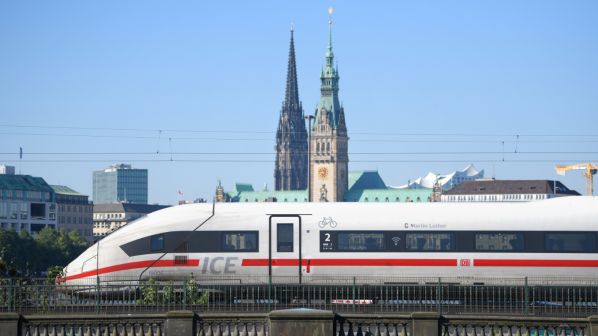The strategy lays the foundation for how the European transport system will become more digitalised and environmentally friendly, and more resilient to future crises. This will result in the 90% cut in emissions by 2050 outlined in the European Green Deal.
The strategy has identified initiatives in 10 key areas.
To make transport more sustainable, the EC will:
- make inter-urban and urban mobility healthy and sustainable, for example by doubling high-speed rail traffic and expanding cycling infrastructure over the next 10 years
- increase green freight transport, including doubling rail freight traffic by 2050
- price carbon and provide better incentives for users, for instance by pursuing measures to deliver fair and efficient pricing across all modes
- boost the uptake of zero-emission vehicles, vessels and aeroplanes, renewable and low-carbon fuels and related infrastructure, and
- create zero-emission airports and ports.
Innovation and digitalisation will shape how passengers and freight move around in the future if the right conditions are put in place. The strategy foresees:
- making connected and automated multimodal mobility a reality, for example by enabling passengers to buy tickets for multimodal journeys to seamlessly switch between modes, and
- boosting innovation and the use of data and artificial intelligence (AI) for smarter mobility.
As transport has been one of the sectors hit hardest by the Covid-19 pandemic, and many businesses are seeing immense operational and financial difficulties, the EC has committed to:
- reinforcing the Single Market, including completing the Trans-European Transport Network (TEN-T) by 2030 and increasing investment, both public and private, in the modernisation of fleets across all modes
- making mobility fair and just for all, and
- stepping up safety and security for all modes.
The EC says these initiatives will result in a number of milestones:
By 2030:
- high-speed rail traffic will double in Europe
- scheduled collective travel for journeys under 500km should be carbon neutral
- automated mobility will be deployed at large scale
- at least 30 million zero-emission cars will be in operation on European roads
- 100 European cities will be climate neutral, and
- zero-emission marine vessels will be ready for market.
By 2035:
- zero-emission large aircraft will be ready for market
By 2050:
- rail freight traffic will double
- high-speed rail traffic will triple
- a multimodal TEN-T network for sustainable and smart transport will be operational with high speed connectivity, and
- nearly all cars, vans, buses as well as new heavy-duty vehicles will be zero emission.
“To reach our climate targets, emissions from the transport sector must get on a clear downward trend,” says Mr Frans Timmermans, executive vice-president for the European Green Deal. “Today’s strategy will shift the way people and freight move across Europe and make it easy to combine different modes of transport in a single journey.”
“As the backbone that connects European citizens and business, transport matters to us all,” says commissioner for transport, Ms Adina Vălean “We have no time to lose in getting it fit for the future. Digital technologies have the potential to revolutionise the way we move, making our mobility smarter, more efficient, and also greener. We need to provide businesses a clear pathway for the green investments they will need to make over the coming decades.”
Industry support
The strategy is supported by the Community of European Railway and Infrastructure Companies (CER), the Association of the European Rail Infrastructure Managers (EIM) and the European Rail Industry Association (Unife), which called for full and swift implementation.
“The milestones proposed by the strategy will enable European railways to continuously evolve their role to be the driving force behind the next-generation mobility that is resilient, smart and sustainable,” says CER executive director, Mr Libor Lochman.
“Rail must become the backbone of a clean, safe, integrated and digital mobility system in the EU,” says Unife director general, Mr Philippe Citroën. “The rail supply industry will commit to ensure the new strategy enables this vision. Research and innovation, through Shift2Rail’s successor programme - particularly regarding next generation rolling stock and ERTMS - will make rail stronger and better fit to tame global crisis such as the current pandemic.”
Rail freight
The European Rail Freight Association (ERFA) says the publication of the strategy signals the beginning of a process to deliver a legal framework, which meets the needs of the rail freight industry.
The association says the revision of the rail freight corridors regulation and the TEN-T regulation, which are included in the strategy, was the right move as the two regulations needed to be addressed together given their mutual importance to one another.
ERFA also called for legislation to ensure that rail freight corridors meet key parameters such as compatibility with the P400 loading gauge and facilitating 740m-long trains on all corridors.
“The roadmap being put forward by the EC is appropriate and targets the key legislation that needs to be revised,” says ERFA secretary general, Mr Conor Feighan. “We remain optimistic that there will be a strong political support from the European Parliament and European Council for ambitious revisions which deliver for rail freight.”

